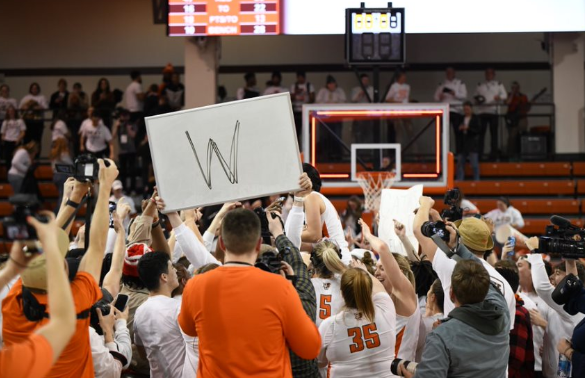As the Facebook group says, “Ohio’s 4 Seasons Are: Winter, Still Winter, Almost Winter, and Construction.”
This year was no exception to that rule. As a result of the stimulus package approved by President Obama last year, state departments of transportation have been awarded plenty of money to improve the transportation infrastructures in the United States.
There is little doubt that these improvements were necessary. As the 2007 I-35 bridge collapse in Minneapolis proved, many of our nation’s highways are not suitable for the traffic they carry on a daily basis.
In Toledo, the DiSalle Bridge across I-75 is being repaired so the same catastrophe is avoided, and since this is my regular route when I travel from home to campus, I’m fine with it.
Unfortunately, the problem with the stimulus package is that when this massive influx of money came in, states became a free-for-all construction zone.
I live in Toledo, and it seemed as though every major street in the city had some sort of work done on it this summer. This year more than ever it seemed as though it was necessary to find detours all the time.
Around my home, it seemed as though even the detours of detours were closed down due to the mad rush to use up stimulus money before it was taken away. Of course, Bowling Green is no exception; the massive Wooster Street closure affects thousands of students, residents and businesses until October.
It’s completely understandable that construction projects happen in the summer. I’m not denying our state’s roads and highways need work. It’s just a nuisance when Ohio cities and ODOT have to work on everything at once.
Not only does it create headaches now, it’s just setting the roads up to fall by the wayside at the same time, meaning that the same problems will take place in the future: numerous roads that need to be fixed all at once yet again.
Some of these roads that are being fixed don’t really need repair (such as North Main Street this past year).
By that, I mean that they aren’t destroying your tires and shocks like other roads (because for Ohioans, the condition of the average road causes massive damage to cars), so I feel as though those could have been spaced out on a bigger time frame.
Another problem that results from road construction in Ohio is almost counterproductive. Many times, when streets are being repaired bit by bit, the leftover “repaired” portions are even worse than before.
It’s become a staple to have to drive over numerous steel plates right in the middle of the road, used to cover up holes or weak patch jobs. That can’t be good for the tires.
One of the major arteries in Toledo, Alexis Road, has this problem. An eastbound driver has to nearly venture into the lanes of oncoming westbound traffic, because the lanes are so terrible. In Cleveland, Lorain Avenue was awful to begin with, but this summer, the so-called repairs have left nothing but an abundance of steel plates and uneven pavement.
I could list many more examples of Cleveland roads that are like this, but this is one of the busier roads in poor condition.
Even for those who do not live in Toledo or Cleveland, I’m sure it’s very possible to think of local examples of roads that one avoids for fear of having your car fall apart or be swallowed by a sinkhole.
I honestly feel as though the so-called repairs done by crews have made the area even worse than it ever was, and I wonder if roads like these will ever be touched up or just abandoned forever because, technically, they were worked on.
The fixes were supposedly made, but in reality, the work done put the infrastructure two steps back.
There have been moments this summer, sitting in traffic or going a lower speed in a work zone where I’ve actually wondered to myself how the companies that make orange barrels and paint for the ever-changing lane lines in roads can keep up with the demand in Northwest Ohio alone.
I’m not exaggerating when I say that every day I’d go out on the road, I’d seem to come across some change to the routes I take around town.
Construction is a national part of live in any American metropolis. It can bring many positive repairs and changes to cities. However, this year, not only does it appear to be creating temporary detour headaches, it seems to be setting the stage for future issues instead of preventing them.


















